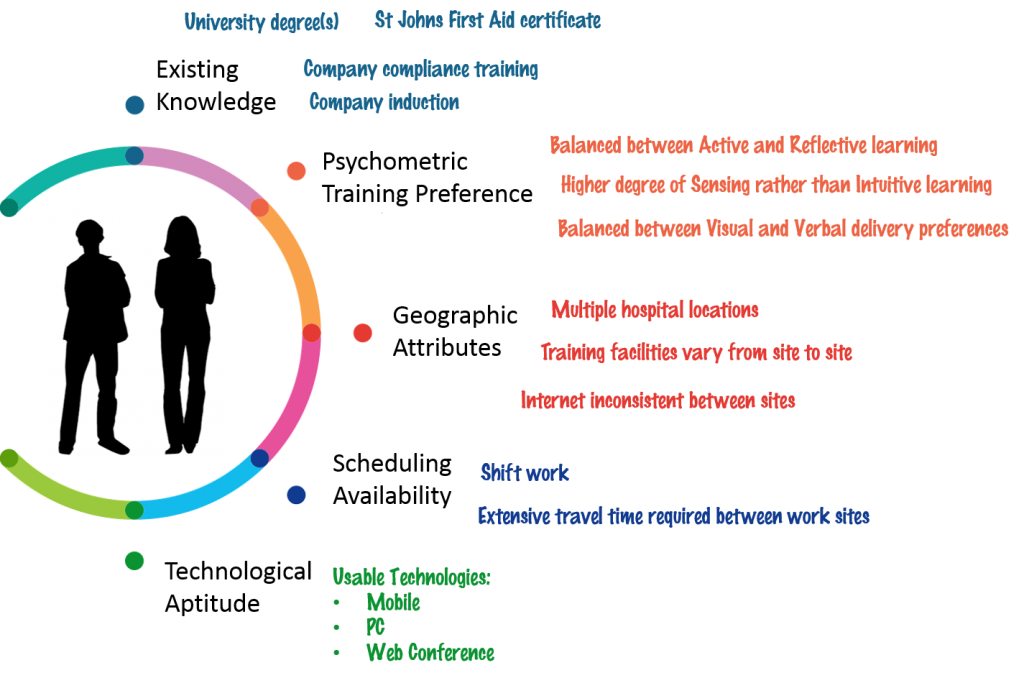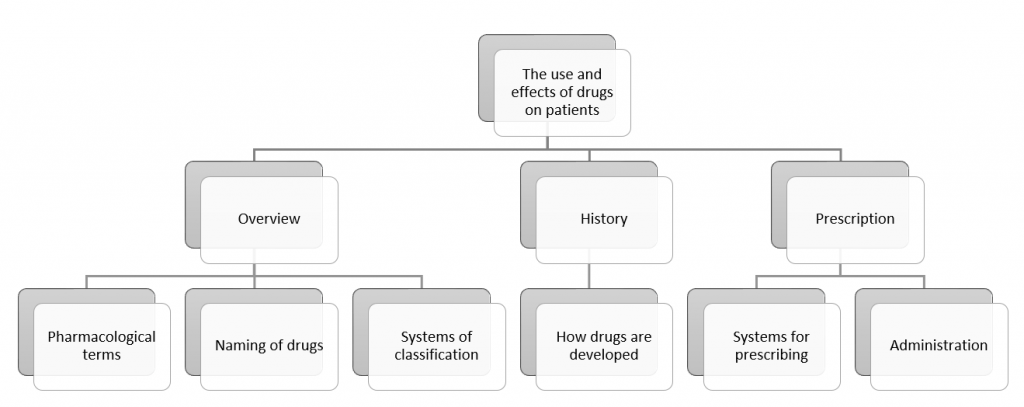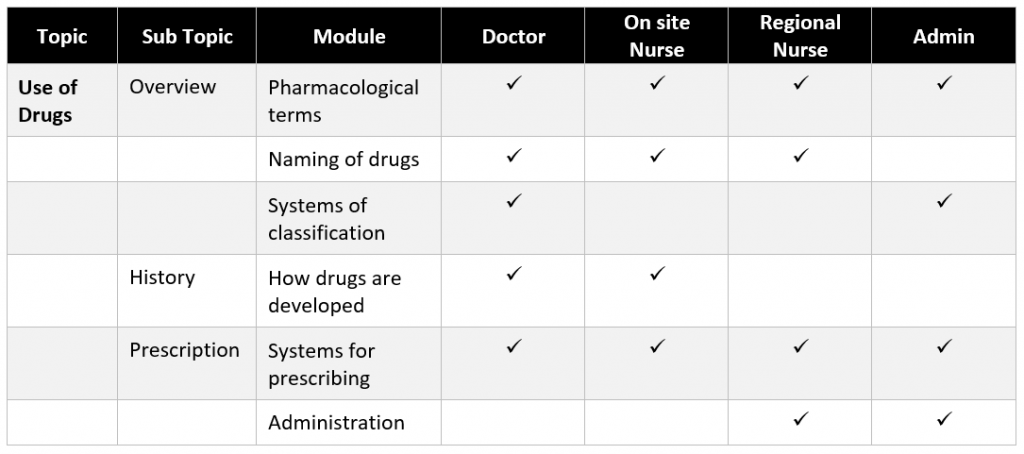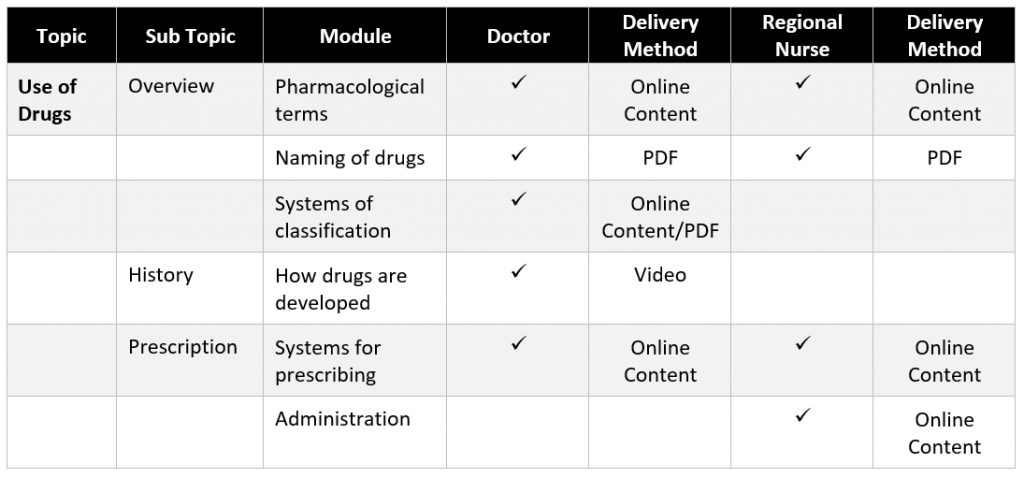
This is the third blog in a series that looks at the learning principles behind blended learning, the needs of the audience and how these are determined, the technologies available and combining all these aspects together.
Now that we have profile to work from, we can proceed to the planning of our blended course. We start this process by comparing our learner profile with the requirements for the intended training to see where we need to focus to achieve the maximum benefit for our learners.
In the image above, from the last blog post, we determined who our learner is and what their preferences for training might be. Across a normal learner population you will need to develop multiple versions of the above profile since your use group will envelop a wide variety of roles and user backgrounds. We are using one profile for the sake of easy explanation, however multiple profiles can be accommodated in any blended program by simply overlaying the profiles, identifying the commonalties and using these as focusses for the program.
Once you have your user profile, or profiles, ready to go these can be set aside while the focus shifts over to the actual training that is the requirement for the blended program.
Let me state at this point that one of keys for developing great training, whether a single intervention or an entire program, is the application of Occam’s razor. Which basically states that if the simplest option works, there is no need to look any further and build superfluous complexity.
This holds true for training delivery. If the requirement of the training is that the learner needs to memorise a 4 digit passcode to get access to the build, then the “training” material need be no more than an email containing the passcode and the instructions on when to use it. To send the learner, in this instance, an online course on why the passcode is required, have them attend a face to face training session on how to use the passcode entry panel, make them complete an online quiz and perform and observed and graded assessment of passcode entry, would only waste the learners and the instructors and the companies time.
In light of this we are going to look at some training for our regional nurse that is a little more complex than passcode entry so that we can explore some of the possibilities for a blended program.
For our program we will use the relatively broad topic of Pharmacology (ie the use and effects of drugs on patients).
As we did with our audience we need to break down the topic being training into its components however this time the result will be the required training outcomes for the specific learner groups undertaking the program. And to get to those outcomes we will need to pull apart the whole subject area and determine the topics and subtopics that make up the entire program.
Depending on the subject this can be a relatively simple task or it can be dauntingly complex and large, either way, the best approach I have found is to start with broad topic headings and then delve down through those headings to determine sub topics, sub topic sections and so on. This can be done with any method you prefer to use such as mind mapping, building a spreadsheet, white boarding, flip charts or even post it notes.
So if we take this approach with our topic of the use and effects of drugs on patients, we might see the following breakdown of part of the topic. I have chosen to represent this breakdown within a hierarchy diagram, however there are multiple methods for documenting the requirements from bullet lists to mind maps to spreadsheets. You just need to choose the method that serves you best.
With the full picture of the program now outlined for all learners, we can start to overlay the specific requirements for our identified learner profile, since different learner profiles may need varying levels of detail across the full program.
Finally then, once the topic and all of its requirements are outlined and the audience has been overlayed onto this, we can return to our specific audience profiles so that we can make some informed decisions as to what elements the blended program requires based on the audience profiles.
Remember that some elements of your program may transcend the above process, for instance one aspect of the program may require the learner to demonstrate a physical task to an instructor or examiner. In the absence of a suitable video link capability this type of demonstration may only happen at a specific onsite location, hence ruling out online or written assessment options from your blended tools.
So we have now broken down our audience and our topic and we understand how those two fundamental elements are linked. Now we have the task of actually pulling together the elements of the blended program into a structured delivery point. In the next blog in this series I will look at how a Learning Management System (LMS) is perfect delivery point for this type of program, how it can be configured to support the multiple facets of the topics and user needs and what some of the pitfalls are when selecting an LMS to handle the job.





